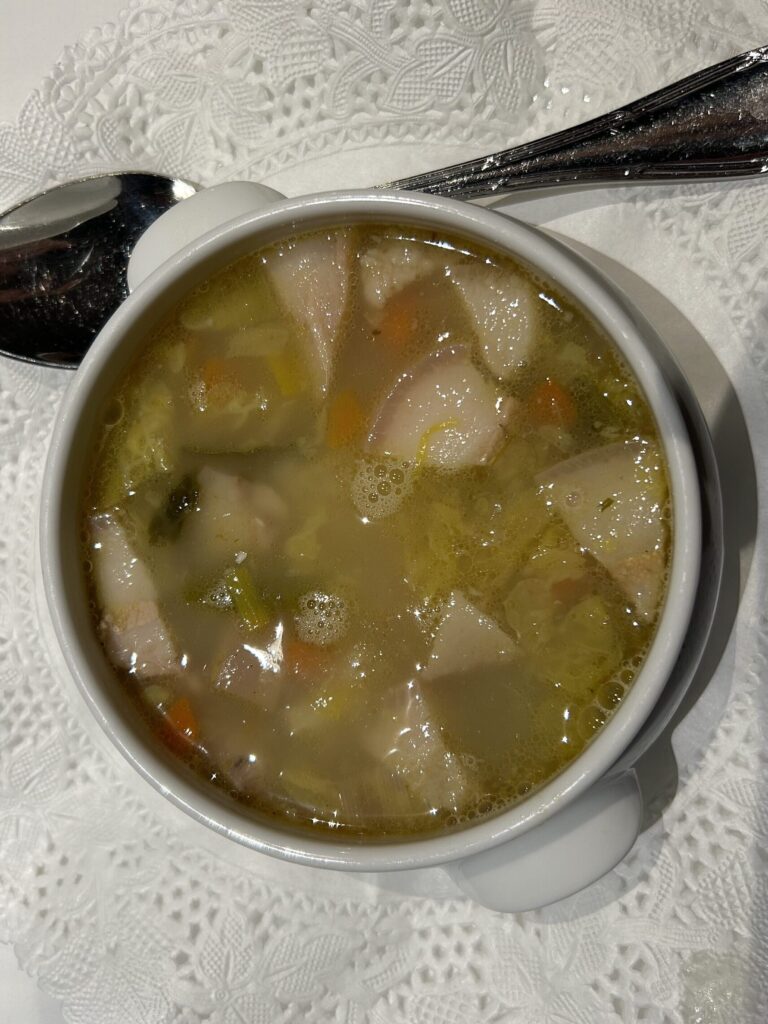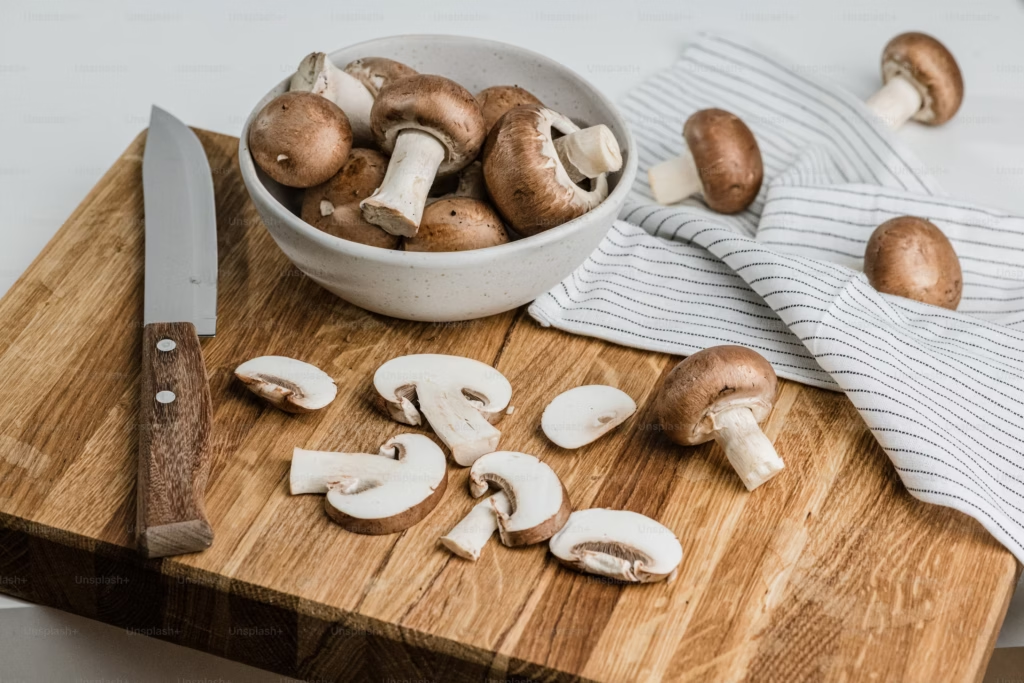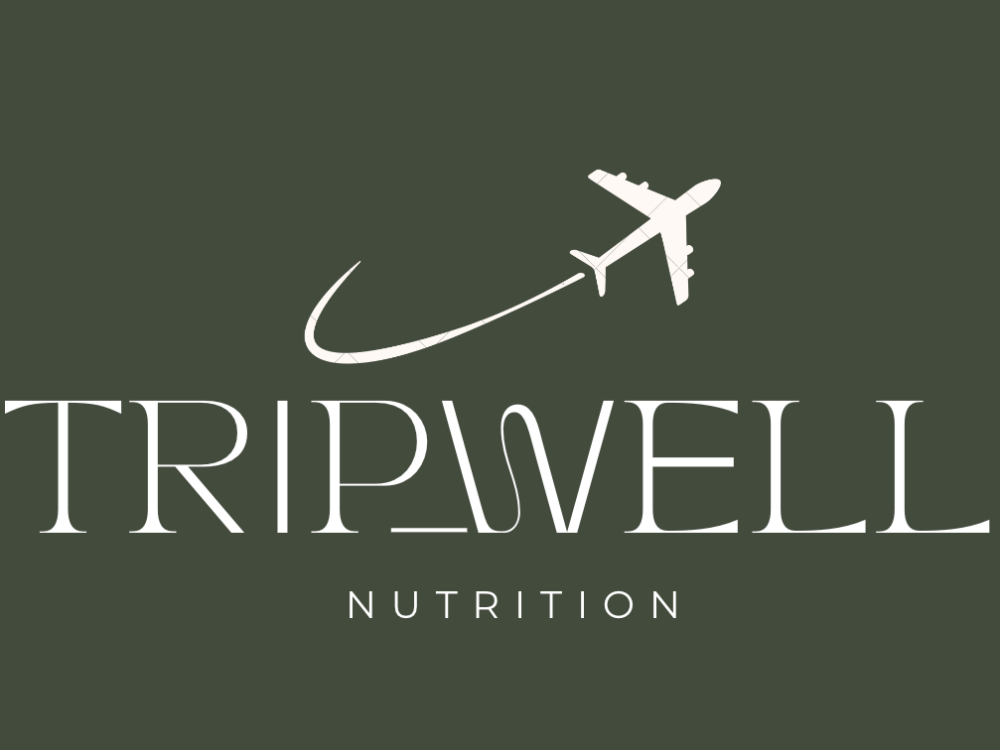3 Traditional Dishes to Eat in Andorra
What to Eat in Andorra
Andorra is a tiny country nestled between France and Spain with culinary influences from both regions. As a ski town, the capital of La Vella features all types of restaurants, catering to a variety of different tourists. However, if you’d like to try some local Andorran dishes, consider the dishes below:
Traditional Andorran Dishes (and their Nutrition)
1. Escudella (Pork Soup)
Escudella is Andorra’s national dish, typically served in winter. The word escudella itself refers to the type of pot the soup is traditionally served in. Escudella the food is a traditional pork soup consisting of broth, chickpeas, seasonal vegetables (including cabbage and carrots), various cuts of meat (the recipe on Andorra’s tourist site lists pig ear, ox tail, sausage and more), and rice or pasta (galets). In the early days, escudella was made from whatever pantry ingredients were available. Today, it can range from simplistic and pared down to more decadent and elaborate.
____________________________________________________________________________________
RD Nutrition Insights
As a highly variable recipe, nutrient content will vary based on preparation. A few ingredient highlights:
- Bones – Many escudella recipes call for use of animal bones in preparation. Depending on cooking time, this could lead to increased levels of nutrients and minerals1 in the broth including:
- Arginine – an amino acid that may be anti-inflammatory for those with arthritis2
- Phosphorus – a mineral that aids in bone/tooth formation, energy production, tissue growth and repair3, 4
- Calcium – a mineral that enables muscle and nerve function, blood vessel contraction, and bone/tooth formation5,6
- Magnesium – a mineral that helps with enzyme activation, energy production, blood sugar control, nerve and muscle function 7,8
- Seasonal vegetables tend to be higher in nutrients than those eaten out of season. With seasonal vegetables like carrots and cabbage, you could expect some vitamin A (immunity, heart/lung/eye health)9 and vitamin K (blood clotting, bone health)10 in your bowl.

Escudella from Can Manel in La Vella
While extremely tasty, I don’t know how authentic my escudella from Can Manel was. The local bordas were closed the day I tried this dish, and the restaurant was was higher end than where I would typically go for a cozy meal after a cold day of skiing.
If you’re interested in making your own escudella, the official Andorran tourism website has a recipe here.
2. Cunillo (Rabbit)
Cunillo is a traditional Andorran dish of rabbit slow simmered in tomato sauce. If cunillo is unavailable, rabbit meat is served in Andorra in a variety of other ways, including sauteed with mushrooms, or served over noodles or potato.
____________________________________________________________________________________
RD Nutrition Insights
The nutrition profile of rabbit meat will vary based on where it was sourced, what it fed on, and other factors. Little information is available online specifically for Andorran raised rabbits, but there are resources to back the following on rabbit meat in general:
- Rabbit is considered white meat through a culinary lens due to its light color and low myoglobin (protein that binds and stores oxygen; makes meat “red”) content, and red meat according to a World Health Organization definition of “any mammalian muscle.”11
- Per USDA, rabbit must be cooked to an internal temperature of 160 degrees F, 5 degrees lower than chicken.12
- Compared to chicken, rabbit meat generally has slightly more protein as well as less fat and sodium. However the actual difference is close to negligible.
- More substantially, rabbit meat has about 30% higher phosphorus (needed to convert food into energy) content than chicken and about twice as much as beef or pork.13
- 100g (3 oz) of rabbit meat would provide about ~30% of your daily phosphorus needs according to study from Spain.14

Image courtesy of aroundtheworlddinners.wordpress.com
3. Truites Carreroles (Mushroom Omelette)
Given Andorra’s location in the Pyrenees mountains, many crops can be difficult to grow due to the harsh mountainous climate, high altitude, and short growing season. Mushrooms are an exception, so you will see them used in many dishes, such as with the rabbit above. Truites Carreroles is a simple dish that could be eaten any time of day and would be high in vitamin D (anti-inflammation, bone development, immunity)15 from both the eggs and wild mushrooms.

Chopping Mushrooms, Unsplash.com
Where to Eat in Andorra
Now that you know what to eat in Andorra, it’s also important to consider where to eat. The key to eating traditional food in Andorra is finding the local “Borda.” “Bordas” are historical buildings that were originally used for grain or livestock storage before converting into restaurants. These cozy gastronomic homes are the places to try classic Andorran cuisine. Most of the small towns around Andorra have a borda, but I would recommend checking hours ahead of time and consider making a reservation. Many don’t open until 8:30 at night or have odd opening hours. For example, Borda Estevat, one of the top recommended bordas in Andorra, was only open from 1:00 -4:00 pm on Sunday, and closed on Mondays during my visit in January of 2025.
Recommended: Borda Estevat in La Vella appeared to be the top recommended borde both online and in person. As of January 2025, they do have escudella and often cunillo on the menu.
You can check out the seasonal menu and make reservations here.
Additional Resources
To learn more about what to eat in Andorra and information on traditional foods and best restaurants, check out the two links below. Unexpected Catalonia is a food blog written by Andorran locals that features restaurant recommendations for both local and international cuisines. The Andorra Tourism website features everything from borde locations in each ski area, the history of certain traditional meals, and even a recipe book.
- Unexpected Catalonia, a local Andorran blog: https://unexpectedcatalonia.com/restaurants-andorra/
- Andorra Tourism Site: https://visitandorra.com/ca/menjar/gastronomia-andorrana/
Whether you choose escudella, cunillo, truites carreoles or an alternate meal, sampling a traditional dish is sure to enrich your trip to Andorra.
Happy eating!
References
- MD Anderson Cancer Center. “Is Bone Broth Good for You?” Cancerwise. https://www.mdanderson.org/cancerwise/is-bone-broth-good-for-you.h00-159694389.html. ↩︎
- National Center for Biotechnology Information (NCBI). “Arginine.” PubMed Central. https://pmc.ncbi.nlm.nih.gov/articles/PMC10803985/. ↩︎
- National Institutes of Health (NIH). “Phosphorus.” Office of Dietary Supplements. https://ods.od.nih.gov/factsheets/Phosphorus-HealthProfessional/. ↩︎
- Mount Sinai. “Phosphorus.” Mount Sinai Health Library. https://www.mountsinai.org/health-library/supplement/phosphorus. ↩︎
- National Institutes of Health (NIH). “Calcium.” Office of Dietary Supplements. https://ods.od.nih.gov/factsheets/Calcium-HealthProfessional/. ↩︎
- Mount Sinai. “Calcium.” Mount Sinai Health Library. https://www.mountsinai.org/health-library/supplement/calcium. ↩︎
- Mount Sinai. “Magnesium.” Mount Sinai Health Library. https://www.mountsinai.org/health-library/supplement/magnesium. ↩︎
- National Institutes of Health (NIH). “Magnesium.” Office of Dietary Supplements. https://ods.od.nih.gov/factsheets/Magnesium-HealthProfessional/. ↩︎
- Mount Sinai. “Vitamin A.” Mount Sinai Health Library. https://www.mountsinai.org/health-library/nutrition/vitamin-a. ↩︎
- National Institutes of Health (NIH). “Vitamin K.” Office of Dietary Supplements. https://ods.od.nih.gov/factsheets/VitaminK-HealthProfessional/. ↩︎
- World Health Organization. Cancer: Carcinogenicity of the Consumption of Red Meat and Processed Meat. Geneva: World Health Organization, 2015. https://www.who.int/news-room/questions-and-answers/item/cancer-carcinogenicity-of-the-consumption-of-red-meat-and-processed-meat. ↩︎
- U.S. Department of Agriculture (USDA) Food Safety and Inspection Service (FSIS). “Safe Food Handling and Preparation: Rabbit—Farm to Table.” https://www.fsis.usda.gov/food-safety/safe-food-handling-and-preparation/meat-fish/rabbit-farm-table. ↩︎
- Rao, X., and S. Ramesh. “Nutrient Content of Rabbit Meat as Compared to Chicken, Beef, and Pork Meat.” Journal of Animal Production Advances. https://www.researchgate.net/publication/290214524_Nutrient_Content_of_Rabbit_Meat_as_Compared_to_Chicken_Beef_and_Pork_Meat. ↩︎
- Smith, J., and L. Gonzalez. “Rabbit Meat Composition in Northwestern Spain.” Animal Feed Science and Technology, 2006. https://www.sciencedirect.com/science/article/abs/pii/S030917400600074X. ↩︎
- National Institutes of Health (NIH). “Vitamin D.” Office of Dietary Supplements. https://ods.od.nih.gov/factsheets/VitaminD-HealthProfessional/. ↩︎
